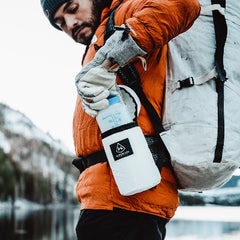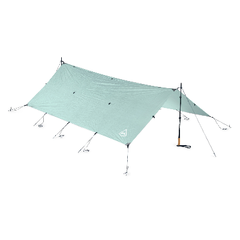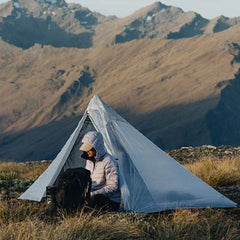I raise my sunglasses to my forehead and step out of the heat and into the Bruneau general store. The owner is an older fella with a face like a fist and bushy eyebrows growing over the rims of his glasses. He’s leaning over shop counter, reading the paper.
“You have a map,” he mutters without lifting an eye.
“We’re looking for Indian Hot Springs… the put-in for the Bruneau.” The Owyhee Desert roads are largely unnamed; friends shared that we should inquire in town for specific directions.
“Why are you here now? You should have been here last week,” he quipped, still focused on his reading. He’s somewhat right; the river is snow-fed, thus its season flashes through spring. For most boats, it’s typically floated around 1,000 cfs…for most boats. Our intent was to float it in guerilla style—packrafts during lower flow. The river was at 500 cfs, ideal for our micro-rafts.
“Well, we’re here now…” I share.
“That road was destroyed years ago by the earthquake.” In 1983, a 6.9-earthquake caused 2-meter scarps in the Lost River Range. My in-laws felt it as far away as Caldwell. “Do you have four spare tires?” he added. Remote and notoriously broken, the road can be completely inaccessible during Idaho’s “monsoon” season. It’s no place for a city car.
Chris, my partner on the expedition, supportively cajoles, “We have four bike tires!”
“Bikes?” He put his paper down and raised his eyes. Apparently we had his attention now. He strained his gaze over my shoulder to the truck out front, loaded with bikes and bags. He then stares us squarely and shoots “Boys, what the hell are you up to?”
I share our plan to cache bikes at the take-out.
“Plan? You guys are crazy…” he shook his head. “The take-out sees over 150 kids every weekend. You think you’re going to find your bikes there when you return? You should turn around and go home now.”
“It’s a big desert, we’ll find a place to put the bikes.” Crazy, maybe. But two years of planning, a year of training and weeks of last-minute details…turning around now wasn’t part of the plan.
He shakes his head and sends us out the door with a cursory set of directions.
We cache the bikes along with three days of rations in the willows below a set of weirs and continue south past the Saylor Air Force bombing range. A dusty dirt highway, Clover 3 Creek Road, is the only sign of human presence in this vastly open wilderness. In the distance, my eyes trace a fractured line etched across the desert plains. I know what it is, but my mind’s eye questions the obvious. The Bruneau Canyon cuts deep; standing at the top, there are sections so narrow that one can’t see the river below. I’m seeing the top of a canyon perhaps 50 feet wide, 300 feet deep.
After 30 miles, a sign points us west to the Bruneau. The road quickly becomes choked with basketball-sized rocks baked into the summer soil, slowing us to 5 to 10 miles per hour. After an hour of class-V off-roading, we watch the road vanish into the deep canyon. With airy ledges likened to a Himalayan highway, I suggest we make this our official transition and send Erik, our backcountry chauffeur, back home with the truck.
The stress of last-minute preparations has shredded my nerves. As we pack our scant supplies into our 40L packs, my gut continues to wrench as I try to comprehend the entire 850-mile route before us. Each day will certainly present unforeseen obstacles, so I breathe deep and focus on the immediate task.
We part ways with Erik and hike the two miles to the river.
The post Idaho Traverse; Part I appeared first on Hyperlite Mountain Gear Blog.

















